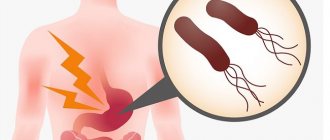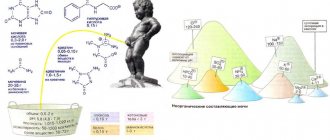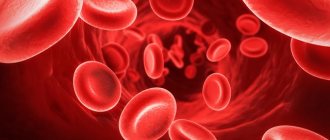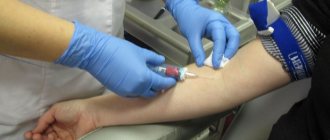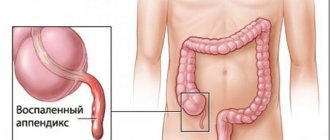Diet for a healthy body
The phosphorus group of enzymes is very important for the normal functioning of systems and organs and proper metabolism.
It is better for children not to take many medications if abnormalities are detected. In most cases, it is enough to switch to a balanced diet to improve your metabolism. The menu should be balanced, containing all the necessary nutritional components that a child needs during the period of active development and growth. You need to make sure that the food is sufficiently saturated with calcium and phosphorus. Give your baby vitamin C in small quantities.
Make sure that the menu always includes fresh fruits and vegetables. It is recommended to consume the dishes boiled, baked, or stewed instead of fried or smoked food, which is contraindicated for children. Introduce cottage cheese, cheese, sour cream, and milk into your diet.
The amount of liquid drunk during the day should be between 1.5-2 liters, because children are very active by nature. It is better if there is more water in its pure form. Give your baby less sweets and flour products, then his health will be fine.
14 years of experience in clinical diagnostic services.
Leave a comment or question
Hello. Please tell me what we should do. My daughter has a stomach ache. We were sent for tests. The surgeon saw that the child had increased phosphatase 735, uric acid 519, urea 8.5. I sounded the alarm, I'm worried. Something is wrong with the child. The girl is plump and weighs 65 kg at 8 years old. Movable, energetic.
In cases where there is a deviation from the norm, there is always a reason (why this happens) and there are consequences (complications). During the diagnostic process, it is desirable to determine the main cause of the pathology and act on it. It happens that by eliminating it, the accompanying painful conditions go away.
Overweight children are at risk for the following diseases:
diabetes mellitus type 2;
chronic cholecystitis and cholelithiasis;
fatty hepatosis (which can later develop into cirrhosis of the liver).
High levels of alkaline phosphatase almost always confirm involvement in the pathological process or damage to the biliary tract, liver, and bones.
It also occurs in diseases such as hyperparathyroidism.
In any case, I recommend identifying the cause of excess weight. These are biochemical tests: glucose tolerance test and glucose. Lipid metabolism indicators: lipoproteins, cholesterol, triglycerides, total protein and liver function.
You should definitely check your hormonal levels, ovarian and thyroid activity.
Normal values
Reference values for CF indicators: children under 14 years of age - from 0 to 5.5 U/l; female patients (from 15 years old) - from 0 to 5.5 U/l; male patients (from 15 years of age) - from 0 to 6.5 U/l.
Increased acid phosphatase activity is found in macrophages or osteoclasts. In men, the activity of CP in the serum consists of the activity of the prostatic form of phosphatase and enzymes localized in hepatocytes and destroyed cells (platelets and erythrocytes). In women, the enzyme in serum comes only from red blood cells, hepatocytes and platelets. If the prostate tumor is benign, there may be slight deviations from the reference values, so in this case the study has no diagnostic value.
What to do
An increase in phosphatase levels is not a disease, but it is an accurate indicator of the condition of the baby’s body.
In order to reduce its level, it is necessary to diagnose the reasons for the increase in the indicator. Typically, treatment of pathologies found in the body occurs through surgery, elimination of symptoms of concomitant diseases, and treatment with medications (antibiotics, injections, anti-inflammatory drugs).
Treatment is prescribed to each patient individually by the attending physician and depends entirely on the underlying cause of the condition.
The attending physician must take into account that there are a number of natural factors in which the level of the component may increase, but this does not entail any threat to the life and health of the baby.
If the doctor doubts the reasons for the increase, he will prescribe an additional examination. After diagnosing the root cause of the disease, the therapist can redirect the patient to a more highly specialized specialist, for example, an orthopedist, surgeon, or oncologist.
Treatment of deviations from normal values
A test for the determination of acid phosphatase is of great diagnostic importance in clinical practice, since it can be used to track the dynamics of tumor growth and the onset of bone metastasis. To determine the cause of deviations from normal values, you should contact a specialist who will prescribe instrumental diagnostic methods and establish an accurate diagnosis. Usually, treatment is prescribed not only on the basis of the CP activity indicator, but after a full examination and determination of the enzyme growth over time.
If the analysis is carried out on time, the attending physician - general practitioner, urologist or oncologist can prescribe adequate therapy that will help improve the quality and length of life. The doctor should help the patient choose the right diet, normalize the drinking regime (at least 2 liters of water per day), determine the dosage and frequency of physical activity.
Source
Characteristics of alkaline phosphatase
Alkaline phosphatase is one of the common enzymes that is present in most organs and tissues of the human body.
This enzyme has not been fully studied to date. Stimulation of alkaline phosphatase begins when organ tissue is damaged, for example, with bruises, necrotic processes.
When tissue cells are destroyed, the alkaline isoenzyme enters the circulatory system, for this reason the phosphatase rate sharply increases.
However, in most cases, ALP is used to indicate the performance of the liver, biliary tract and metabolism in bone tissue.
The highest normal level of the isoenzyme in adult women and men is in the liver cells, in children under one year old - in bone tissue, in pregnant women - in the placenta.
Alkaline phosphatase is a collection of isoenzymes that ensure the implementation of biochemical processes that ultimately lead to the breakdown of phosphorus acid monoesters.
According to its chemical structure, an enzyme is a protein with a complex molecular structure. In chemical and biological processes that occur in the tissues of the body, the alkaline enzyme plays a catalytic role, which ensures the normal functioning of metabolism in all tissues of the human body.
Alkaline phosphatase ensures that phosphorus, necessary for metabolic processes, enters tissue cells.
The enzyme level signals the presence of the disease even in the absence of symptoms.
Most often, an increase in alkaline phosphatase levels is observed when:
- liver pathologies: jaundice, cirrhosis, fibrosis, simple familial cholemia;
- diseases of bone tissue: rickets, improper healing of bone tissue during a fracture;
- cancerous tumors of various localizations;
- various diseases: colitis, arthritis, myocardial infarction and others;
- taking medications, for example, Ranitidine or Papaverine. For this reason, if there is a need to donate blood to determine the level of alkaline phosphatase, you should inform your doctor about taking medications.
In a healthy state, changes in the level of alkaline phosphatase in the blood serum are also observed, for example, with increased physical activity, after eating food, during pregnancy and lactation, in a child during the development of bone tissue.
Lack of the enzyme can lead to hypervitaminosis of vitamin D, vitamin deficiency and hypovitaminosis, hypothyroidism.
Summer is a period when it is not recommended to take vitamin D preparations, since a lack of the alkaline isoenzyme and an excess of solar and synthetic vitamins can provoke hypervitaminosis, which can lead to tissue ossification, which is especially dangerous for children.
For biochemical research, blood from a vein is used; the sampling should be done on an empty stomach, since activation of digestion leads to an increase in the level of the enzyme.
Before taking blood, you must refrain from smoking.
Causes and signs of increased alkaline phosphatase in children
One of the signs of high ALP is muscle hypotonicity.
ALP in children is always in elevated concentrations, but an increase in the level above the reference values reflects the presence of pathological processes.
Rickets is one of the growth factors, since with this disease an abnormally high activity of osteoblasts is formed. The first signs: excessive sweating (sweat has a sour smell), constipation, sleep and appetite disturbances, low muscle tone. Later, rickets manifests itself as bloating, deformation of the chest and pelvis, curvature of the legs, and developmental delays.
The increase in ALP accompanies a number of bone diseases in children: osteomalacia, myeloma, osteosarcoma, Paget's disease, bone tuberculosis, tumors with the formation of metastases affecting bone tissue. Symptoms include bone pain, increased bone fragility, fever, swollen lymph nodes, dizziness, and weight loss.
ALP increases with liver pathologies: hepatitis, cirrhosis, biliary obstruction, metastatic cancer, as well as infectious mononucleosis, which affects the lymphoid tissue of the liver. Signs include: yellowing of the skin, gastrointestinal upset, light-colored stool and dark-colored urine, fever, pain in the right hypochondrium.
Obstructive jaundice is the cause of high ALP
The growth of the enzyme in pathologies of the biliary tract is due to increased death of cells that contain alkaline phosphatase. In children, the most common cause is obstructive jaundice, accompanied by obstruction of the bile ducts; another factor may be pancreatic or stomach cancer. Symptoms are manifested by a feeling of heaviness in the right hypochondrium, aching pain or attacks of excruciating pain, accompanied by numbness of the limbs and rapid heartbeat. The appearance of itching, yellowing of the skin, light-colored feces and dark urine is characteristic.
Burnett's syndrome affects the disturbance of the exchange of phosphorus and calcium in the body; the factor causing the pathology is hyperfunction of the parathyroid glands. There are no specific symptoms; the child experiences general weakness, loss of appetite, frequent urination and constipation.
An increase in the level of alkaline phosphatase during the recovery period after fractures reflects the active process of bone fusion. A temporary increase may be the result of taking hepatotoxic drugs (paracetamol, penicillin, sulfonamides).
A physiological increase is observed in premature infants and during puberty.
What Causes Increased Enzyme Levels
The causes of elevated alkaline phosphatase may be natural or pathological.
Natural causes include:
Physiological characteristics of the body characteristic of a certain period of life (pregnancy);
An increase associated with external influences on the body (diet, physical activity, medication).
Alkaline phosphatase is elevated - reasons that relate to the physiological characteristics of the body:
Growth, development, and puberty provoke an increase in alkaline phosphatase. When a certain age limit is reached, the level of enzyme in the blood begins to spontaneously fall. Moreover, the female body reaches this mark much earlier (up to 20 years) than men (up to 30 years);
Before birth, the baby in the womb develops and grows more actively. This process causes an increase in the concentration of placental alkaline phosphatase in the blood of the expectant mother;
In the postoperative period or during the recovery period after significant fractures;
Medicines have different effects on the body. There are medications whose long-term use increases alkaline phosphatase. These drugs include: antibiotics, contraceptives, paracetamol, aspirin, drugs with hepatotoxic effects;
Bad habits: smoking, alcohol;
Age characteristics. Children during the period of active growth have increased concentrations of enzymes in the blood. A similar situation is observed in women during menopause. In older people, bones become lighter and more brittle, and their blood alkaline phosphatase levels are higher than normal;
lack of physical activity;
Obesity;
Incorrectly selected diet. The menu is dominated by fatty, spicy and fried foods.
The level also increases with pathological changes in the cells of the placenta, liver, and bones. In order for enzyme molecules to enter the blood, liver and bone cells must be destroyed.
Pathological processes, the symptom of which is high alkaline phosphatase, can be divided into 3 categories:
Liver dysfunction and biliary tract problems. Such ailments include:
Viral and autoimmune hepatitis. Increase in alkaline phosphatase level approximately 3 times;
Cirrhosis. With the biliary type of the disease, the level of alkaline phosphatase can increase 4 times and remain at the reached limit;
Infectious mononucleosis;
Sclerosing cholangitis is a chronic autoimmune disease that causes high pressure in the portal vein area;
Stagnation of bile;
Blockage of the bile ducts with stones. As a result, the outflow of bile is produced in small quantities or there is no exit at all.
Bone diseases:
severe destruction and deformation (Paget's disease);
Cancer with metastases in bone tissue;
Osteomalacia is a systemic skeletal disorder in which the bone becomes deformed and soft. As a result, phosphoric acid, vitamins and calcium are excreted, and the bones of the skeleton soften;
Osteogenic sarcoma - a tumor forms and develops directly deep in the bone tissue;
Rehabilitation after fractures;
Diseases of a different nature:
Heart attack;
Ulcerative colitis is a chronic inflammation of the colon mucosa;
Intestinal perforation is a through hole in the large intestine through which intestinal contents enter the abdominal cavity;
Hyperparathyroidism is pathological changes in the endocrine system that provoke intensive work of the parathyroid glands.
According to statistics, 50% of cases with high concentrations of alkaline phosphatase were caused by liver disease.
Alkaline phosphatase is normal in children
Since enzyme activity differs at different ages, the normal values should be selected based on this fact. After puberty, gender differences in patients should also be taken into account. Let us consider in more detail the values of the ALP norm for different age categories of patients.
In newborn babies in the first two weeks of life, normal values vary from 80 to 250 U/l.
Maximum concentrations of the substance are typical for the first year of a baby’s life. So, from the second week to 1 year, the permissible ALP norm is from 125 to 173 U/l. It is during this period that the child’s increased growth, especially bone tissue, is observed. A large number of young bone cells are formed, which are necessary for the proper development of the body.
From 1 year to 10 years, the reference values of the indicator under consideration are in the range from 137 to 331 U/l. And from 10 to 13 years: from 130 to 415 U/l.
After the onset of puberty, at the ages of 13 to 15 years, the norm for boys is 111-457 U/l, for girls - 55-257 U/l. Such noticeable differences between boys and girls are explained by a more pronounced process of growth of bone and muscle tissue in boys.
From 15 to 19 years old, the norm for boys is from 80 to 300 U/l, for girls – from 51 to 114 U/l. Subsequently, the indicators are identical for all ages, and are 35 - 111 and 39 - 134 U/l for women and men, respectively.
Features of increase in adults
There are a number of nuances that need to be taken into account when deciphering the results of an alkaline phosphatase blood test. First, in men the content of isoenzymes in the blood is always higher than in women. The difference is approximately 20-25 points. With age, the amount of alkaline phosphatase increases in everyone. This means that the concentration of this element depends on the age and gender of the person.
The most popular natural causes of high blood enzyme levels in adults are:
- Avitaminosis;
- Poor nutrition;
- Excessive physical activity.
The list of possible reasons for increased levels in women is supplemented by the following “moments”:
- Pregnancy, the period before the birth of a baby;
- Breast-feeding;
- Climax;
- Taking hormonal contraceptives. With long-term use, complications in the form of diseases are possible, for example, cholestatic jaundice and intrahepatic cholestasis.
For more information about changes in phosphatase levels during pregnancy, read the article Alkaline phosphatase is elevated during pregnancy: norms, symptoms, causes.
Men over 50 years of age are at risk. They are more likely to develop Paget's disease (skeletal deformity).
Preparation for analysis and collection of material
Blood serum is used for the study. When collecting material for analysis, it is important to avoid hemolysis. If red blood cells are destroyed, you need to take a second blood sample. The analysis period is 1 business day. Before taking a biochemical analysis, the patient must refuse food, drink sweet and carbonated drinks, and coffee. The last meal should be no later than 19.00. It is important for the patient not to smoke or drink alcohol the day before the test, and to try to avoid stressful situations and excessive physical activity. It is preferable to take blood samples in the morning before taking medications.
The enzyme detection method involves the use of a citrate buffer and differs from diagnosing alkaline phosphatase activity by pH value. The enzyme activity is determined according to the following principle: activated acid phosphatase breaks down p-nitrophenyl phosphate, forming phosphate and p-nitrophenol in an alkaline environment. A colorless phosphoric acid ester is used as a substrate. In an alkaline environment, p-nitrophenol is yellow. Phosphatase activity is assessed by the color intensity of the solution. This biochemical method is quite fast (within 24 hours) and accurate. The result is given to the patient the next day after blood sampling (the time depends on the research method and the workload of the laboratory technicians).
In what cases is alkaline phosphatase elevated?
Alkaline phosphatase is a special enzyme that activates the biochemical reactions of cleavage of phosphate molecules from organic compounds. It is located on the surface of the cells of the liver, intestinal mucosa, bone tissue, and placenta. Depending on the location, the following forms of the enzyme are distinguished: bone, intestinal, hepatobiliary and temporary or transitional placental.
A standard biochemical blood test determines total alkaline phosphatase, but there are also special methods that allow differentiation between individual forms of the enzyme. Such narrower studies are rarely resorted to, since doctors mainly rely on the clinical picture when evaluating test results, that is, in the presence of severe liver symptoms, they do not need to confirm the hepatic origin of alkaline phosphatase.
Normal values
Alkaline phosphatase levels in the blood vary with age. Thus, in a child who is in a period of active growth, the concentration of this enzyme significantly exceeds that of an adult. This is explained by the fact that alkaline phosphatase is involved in the processes of skeletal formation. Therefore, the average norms by age are as follows:
These figures may not coincide with data from laboratories, which may use different methods for measuring the indicator. Therefore, when assessing the result of the study, you should rely on the reference values specified in the analysis form.
Reasons for increased alkaline phosphatase activity
An increase in alkaline phosphatase in the blood is observed in various pathological processes occurring in liver cells, bones, and placenta. That is, for the enzyme to enter the blood, the cell on the surface of which it is located must be damaged. This is exactly what happens in the following conditions:
- Cholestasis is stagnation of bile, which develops when the bile ducts, common bile duct are blocked by stones or are pressed by a pancreatic tumor. Cholestasis is also characteristic of malignant neoplasms of the biliary tract and liver, and biliary cirrhosis.
- Acute and chronic inflammatory and necrotic processes occurring in the liver. For example, with viral, toxic, alcoholic hepatitis, infectious mononucleosis and cytomegaly, cirrhosis, parasitic liver disease, cancer and liver metastases.
- Bone tissue pathologies (especially Paget's and Gaucher's disease, cancer, bone metastases).
- Diseases associated with impaired phosphorus-calcium metabolism - hyperparathyroidism, rickets.
- Healing of fractures.
- Lack of calcium and phosphorus in the diet. This leads to the activation of osteoblasts and the destruction of bone tissue to compensate for the lack of these substances in the body.
- Taking hepatotoxic drugs that damage hepatocytes.
It is also worth noting that even with a normal pregnancy in the third trimester, the level of alkaline phosphatase in the blood increases due to the addition of a new temporary form of the enzyme - the placental one. However, significant fluctuations in this indicator in any direction should be considered as a sign of a pathological course of pregnancy. Thus, with eclampsia, alkaline phosphatase enters the blood in large quantities, as placental cells are damaged.
In addition, a physiological increase in the activity of this enzyme also develops in premature infants, who grow at an accelerated rate, and in women after menopause (their osteoporosis begins to progress).
What to do if alkaline phosphatase is elevated?
If the normal value of alkaline phosphatase, detected during a biochemical blood test, exceeds the normal value, the patient requires a subsequent more in-depth examination, since changes in the activity of this enzyme alone cannot be used to judge the presence of pathology, much less prescribe treatment.
First, you should contact your local physician or family doctor. After evaluating the test results, examining and interviewing the patient, he will make a preliminary diagnosis and refer the patient for consultation to a more specialized specialist - a hepatologist, oncologist, orthopedist, endocrinologist or surgeon.
Signs of diseases of internal organs
You can suspect that a child is developing some kind of pathology if you carefully monitor his general condition. An increase in alkaline phosphatase levels is not the only sign that indicates that all is not well with your baby:
- Pathologies of bone tissue. In this case, the child often complains that his legs or arms hurt. He cannot play active games for a long time, run, jump, because he gets tired quickly and needs to constantly rest. In severe cases of the disease, even deformation of the limbs is possible.
- Liver pathologies. The baby becomes lethargic and apathetic. Refuses to eat. His body weight decreases. Nausea and vomiting may occur, and the color of the skin may change - it becomes yellow or brown. Certain diseases sometimes cause nosebleeds. If you conduct a blood test, then along with an increased level of alkaline phosphatase, you can find that the level of ALT is also abnormal.
- Malignant neoplasms. For a long time, the tumor does not manifest itself at all. The child still leads a normal life. His condition worsens sharply - he becomes lethargic, loses his appetite, loses weight, and gets tired quickly. To identify a neoplasm, it is necessary to conduct a thorough diagnosis, which will include both laboratory and instrumental techniques.
- Infectious mononucleosis. In this case, the first sign of the development of pathology is an increase in temperature. The baby himself becomes lethargic, capricious, and does not want to eat. In addition, he develops a cough and sneezes frequently. If you examine his throat, you will notice the appearance of white plaque on his tonsils. Certain groups of lymph nodes become enlarged.
- Rickets. Young children are more susceptible to this disease. It develops due to insufficient intake of vitamin D into the baby’s body. The first symptoms are increased sweating, hair loss in the occipital region of the head, hypotension of the muscles of the extremities. If appropriate treatment is not carried out in time, the skull and limbs will subsequently become deformed.
- Acute intestinal infections. This group includes a lot of diseases - rotavirus infection, salmonellosis, dysentery, yersiniosis and others. The symptoms are as follows: the temperature rises, the stomach hurts in all parts, nausea and vomiting, and diarrhea appear. Because the child loses a lot of fluid, the water balance is disturbed.
Video: Liver tests
If you have these symptoms, it is recommended not to self-medicate, but to immediately go to a medical facility for help. In childhood, many diseases are more severe, and their consequences can be dangerous. The sooner a particular disease is detected, the easier it will be to cure it and return the baby to normal life.
Alkaline phosphatase abnormalities
A study that determines the level of alkaline phosphatase is prescribed by the doctor according to indications: before surgery, to assess the functionality of the liver.
The presence of symptoms such as lack of appetite, nausea and vomiting, abdominal pain, weakness and drowsiness is a reason to conduct a blood test to determine the ALP level.
As a result of damage to tissue integrity, alkaline phosphatase levels may change. Changes can be both pathological and normal.
Video:
Causes of pathological changes in the level of alkaline isoenzyme:
- diseases of the liver and bile ducts;
- low-quality neoplasms;
- bone pathologies;
- infectious polyarthritis;
- acute renal failure;
- infectious diseases of the gastrointestinal tract;
- acute myocardial infarction.
Changes in the level of the alkaline isoenzyme can be either up or down. The most common is an increase in the normal level of the isoenzyme.
However, a reduced ALP rate should not be ignored, since such a condition may signal the development of a disease that threatens human life and health.
The main reasons for a decrease in alkaline phosphatase levels are donor blood transfusions, thyroid pathologies and endocrine diseases. May occur with anemia, lack of magnesium and zinc.
When diagnosing a disease, it is impossible to rely solely on the level of phosphatase, so establishing an accurate diagnosis must be based on the results of a set of studies.
Reasons for decreased alkaline isoenzyme levels:
- congenital diseases, for example, hypophosphatosia;
- lack of protein, which is caused by poor nutrition;
- disease – hypothyroidism;
- micronutrient deficiency;
- destruction of bone tissue, for example, osteoporosis in the elderly;
- thyroid dysfunction;
- accumulation of radioactive isotopes in bones;
- acute anemia;
- lack of vitamin C – zinc;
- hypervitaminosis of vitamin D, which is caused by improper use of a drug containing this vitamin.
Only a doctor at a medical institution can identify the exact cause of a decrease in indicators.
Hypophosphatasia
Hypophosphatasia is a rare disease of a genetic nature that is transmitted only by inheritance. It is characterized by a deficiency of alkaline phosphatase in the body, which is caused by a gene mutation. All this leads to the fact that the patient begins to develop hypomineralization - this is a violation of the development of skeletal bone tissue of an extensive nature.
To date, only a single drug is used to treat this pathology - Asfotase alfa. This is an enzyme that is created artificially and is necessary in order to maintain normal levels of the enzyme in the body. After all, the disease can lead to various irreversible processes in the bone tissue of the skeleton.
A specialist will tell you more about alkaline phosphatase and its content in the video:
Read: Elevated red blood cells in the blood of pregnant women and children: causes and treatment options
22 Jun 2015 Yuki 633
Share this post
We recommend reading along with this article
- Norms for biochemical blood tests: how to decipher the result
- What does Dr. Komarovsky say about a general blood test in children?
- What is autoimmune thyroiditis, clinical picture of the disease in community terms
- Elevated alkaline phosphatase in the blood: causes and symptoms of the condition
- How to properly take a urine test for pregnant women: what you need...
- Leukocytes in infant feces: normal indicators, reasons...
- The drug Creon: side effects and dosage for children
- How to make a children's room with a unique and inimitable design
- Symptoms, diagnosis and treatment of high TSH
Causes of increased alkaline phosphatase levels
In the case of an increased level of the alkaline isoenzyme for no apparent reason, the patient may be diagnosed with various diseases of the liver, cartilage and bone tissues.
To establish the correct diagnosis, additional examinations are needed - ultrasound, MRI, computed tomography, x-ray, chemical and biological blood test.
Necrotic and inflammatory changes, bruises and damage to internal organs, and metastatic growth can be diagnosed.
When it comes to liver tissue diseases, the patient’s blood will have elevated levels of alkaline phosphatase, aspartate aminotransferase and alanine aminotransferase.
Increased levels of phosphorus and calcium indicate disorders of bone tissue and joints.
Factors leading to an increase in the isoenzyme:
- liver diseases;
- cancerous tumors and the spread of metastases to other human organs;
- infectious mononucleosis;
- pathologies of bone and cartilage tissue;
- fractures, injuries;
- osteomalacia;
- Paget's pathology;
- diseases of the circulatory and cardiovascular systems;
- pathologies of the gastrointestinal tract.
Video:
If the collected blood has been exposed to cold, the alkaline phosphatase level will be higher than normal.
In addition to ALP, acid phosphatase coefficient is also found in medicine, which is the main indicator of disorders of the prostate gland, in particular neoplasms.
Prostate phosphatase is an enzyme that determines tumor changes. The overall CF indicator increases with malignant formation in the prostate.
A sharp increase in the acid enzyme signals the spread of metastases to other organs.
Elevated alkaline phosphatase is not always an indicator of a pathological process. In some cases, the indicator may exceed the norm even in a healthy person.
A reasonable increase in phosphatase is observed in pregnant women and in women who take hormonal contraceptives.
To talk about the development of the disease, additional research is necessary. The limits for determining the norm of alkaline phosphatase are extensive and depend on many factors.
The level of the isoenzyme in combination with additional tests provides complete information regarding the patient’s disease.
Norms
The level of alkaline phosphatase in the blood of children differs as they grow. According to the table, the indicators are:
| In newborns up to 10 days the indicator is normal. | 150-380 units/l |
| From 6 months to a year | more than 462 units/l |
| Ages 1-3 years | 281 units/l |
| From 4 to 6 years, alkaline phosphatase should not be less | 269 units/l |
| 7-12 years are characterized by ALP indicators | 130-560 units/l |
In adolescents, alkaline phosphatase levels are already beginning to differ depending on gender. Boys have more meaning. At the age of 12-13 years, their ALP is 200-495, and in girls it is 105-420 U/L. And from 16 to 19 years of age, the norm for boys is 65-260, and for girls it is lower – 50-130.
These indicators are due to the fact that bone tissue is actively growing in adolescents. For the same reason, the norm in newborns is significantly higher than the level of alkaline phosphatase in adults. All of the above indicators are the total number of enzymes localized in different organs.
Conclusion
Elevated phosphatase can be a symptom of a serious disease, for example, oncology, hepatitis, bone diseases. But we should not forget that a deviation from the norm of this component in the blood is not a disease, but only serves as an indicator of the condition of the body and helps to identify a number of pathologies in internal organs and bones.
But an increase in its level does not always reflect the presence of a disease in the body. In some cases, for example, after a fracture, during a period of active growth, phosphatase may be increased in infants, but this condition is considered normal. Analysis for the level of the component is carried out using blood sampling on an empty stomach.
Treatment for patients is selected individually by the attending physician and depends entirely on the root cause that caused this condition.
There are no effective preventive measures to normalize phosphatase, but doctors recommend undergoing regular medical examinations from time to time in order to timely diagnose the onset of pathology
It is also important for parents to monitor the balance of their child’s diet, because it is so important that the child’s body receives all the vitamins and minerals
What does the analysis say?
Alkaline phosphatase is a group of vital enzymes that are found in almost all tissues of the human body. More of them are located in bone tissue, bile ducts and osteoblasts. Also, a considerable amount of enzymes can be observed in the intestinal mucosa, where it can be produced in small quantities during digestion. However, this is not considered its main function in the body (maintaining digestion) - these enzymes promote the removal of phosphoric acid, which is important for the body to protect internal organs from dangerous organic compounds.
